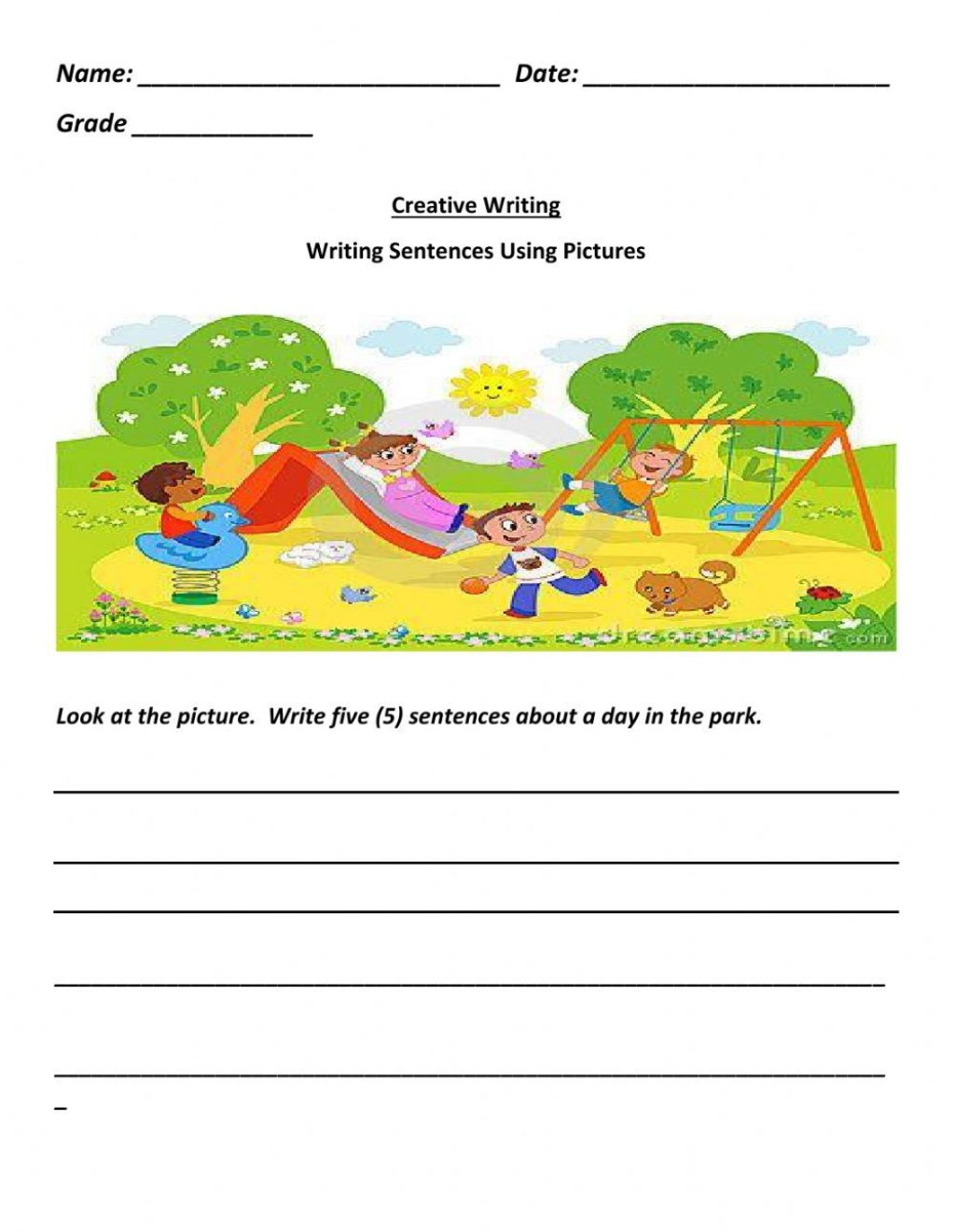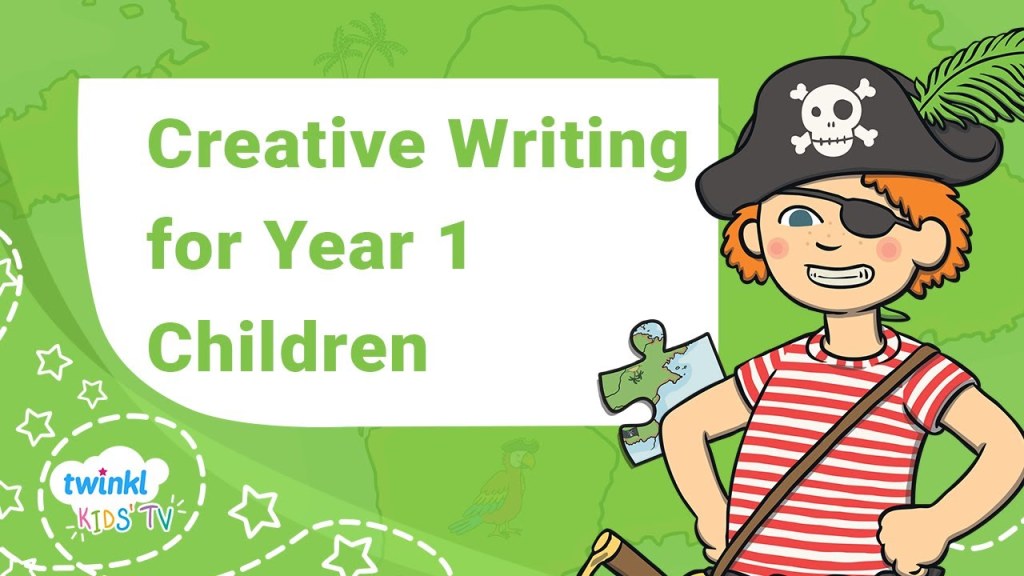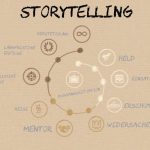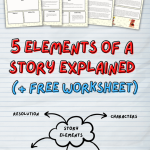Unleash Your Creativity: Join Creative Writing Year 1 And Ignite Your Passion!
Creative Writing Year 1: Unlocking Imagination and Building Writing Skills
Greetings, Readers! Are you ready to embark on a creative journey filled with imagination and storytelling? In this article, we will delve into the world of creative writing year 1, exploring what it entails, who can benefit from it, when it is introduced, where it is taught, why it is important, and how it can be effectively incorporated into the curriculum. So, let’s dive in and discover the wonders of creative writing!
Introduction
Creative writing year 1 is an essential component of early education that nurtures the development of communication, critical thinking, and self-expression skills in young learners. It offers a platform for students to explore their creativity, imagination, and unique perspectives through the power of words. By engaging in various writing exercises and activities, students are encouraged to think creatively, improve their vocabulary, and develop their own writing style.
2 Picture Gallery: Unleash Your Creativity: Join Creative Writing Year 1 And Ignite Your Passion!


During the first year of creative writing, students are introduced to the fundamentals of storytelling, character development, and descriptive writing. They learn to craft engaging narratives, create vivid descriptions, and express their thoughts and emotions effectively. Through this process, students develop a love for writing, enhance their language skills, and cultivate a lifelong appreciation for literature.
Now, let us take a closer look at the different aspects of creative writing year 1:
What is Creative Writing Year 1?

Image Source: pinimg.com
🖌️ Creative writing year 1 is the initial stage of introducing young learners to the world of writing and storytelling. It focuses on developing their imagination, language skills, and creativity through various writing exercises and activities.
Paragraph 1: Introduction to Storytelling
During creative writing year 1, students are introduced to the art of storytelling. They learn the basic elements of a story, such as characters, setting, plot, and conflict. Through guided exercises and prompts, students begin to explore their creativity and develop their storytelling abilities.
Paragraph 2: Character Development
One important aspect of creative writing year 1 is character development. Students learn to create well-rounded characters by giving them unique traits, personalities, and motivations. This helps students understand the importance of character-driven narratives and adds depth to their stories.
Paragraph 3: Descriptive Writing

Image Source: ytimg.com
Descriptive writing is another crucial skill taught in creative writing year 1. Students learn to use descriptive language to paint vivid pictures in the reader’s mind. They explore sensory details, figurative language, and imaginative techniques to make their writing more engaging and captivating.
Paragraph 4: Expressing Thoughts and Emotions
During this stage, students are encouraged to express their thoughts, feelings, and emotions through writing. They learn to articulate their ideas effectively and convey their experiences in a clear and coherent manner. This helps students develop their communication skills and emotional intelligence.
Paragraph 5: Building Vocabulary
Creative writing year 1 also focuses on expanding students’ vocabulary. Through exposure to a wide range of words and phrases, students learn to enrich their writing and choose appropriate vocabulary to convey their ideas. This helps improve their language skills and enhances their overall communication abilities.
Paragraph 6: Developing Writing Style
As students progress in creative writing year 1, they begin to develop their own writing style. They experiment with different writing techniques, explore different genres, and find their unique voice. This allows students to express their individuality and creativity through their writing.
Who Can Benefit from Creative Writing Year 1?
🎒 Creative writing year 1 is beneficial for all young learners, irrespective of their writing abilities or interests. It provides a platform for students to explore their creativity, improve their language skills, and develop a love for writing. Additionally, creative writing year 1 fosters critical thinking, self-expression, and confidence in students.
Paragraph 1: All Students
Creative writing year 1 is designed to cater to the needs of all students. Whether they are natural storytellers or struggling writers, the program offers a supportive environment for students to develop their writing skills at their own pace. It encourages students to express their ideas and opinions, regardless of their initial writing abilities.
Paragraph 2: Language Learners
Creative writing year 1 is especially beneficial for language learners. It provides an opportunity for students to practice and improve their language skills in a creative and engaging manner. Through writing exercises, students enhance their vocabulary, grammar, and sentence structure, thus strengthening their overall language proficiency.
Paragraph 3: Shy or Reserved Students
Creative writing year 1 can help shy or reserved students come out of their shells. It offers a safe and non-judgmental space for students to express themselves freely without fear of criticism. Through creative writing, these students can find their voice, boost their self-esteem, and develop their communication skills.
Paragraph 4: Future Writers
For students who aspire to become writers, creative writing year 1 serves as a foundation for their future endeavors. It provides them with the necessary skills, knowledge, and inspiration to pursue their passion for writing. Through consistent practice and guidance, students can hone their craft and develop their writing skills.
Paragraph 5: Critical Thinkers
Creative writing year 1 nurtures critical thinking skills in students. It encourages them to analyze situations, think outside the box, and develop innovative ideas. Through storytelling and problem-solving exercises, students learn to approach challenges creatively, fostering their ability to think critically in various aspects of life.
When and Where is Creative Writing Year 1 Introduced?
⏰ Creative writing year 1 is typically introduced in primary schools as part of the English language curriculum. It is often taught during the first year of formal education, when students are around 5 to 6 years old. Creative writing year 1 is incorporated into classroom activities and can also be encouraged at home.
Paragraph 1: Primary Schools
Creative writing year 1 is primarily introduced in primary schools. It is integrated into the English language curriculum, where students have dedicated writing lessons. Teachers incorporate various creative writing exercises, prompts, and activities to engage students and develop their writing skills.
Paragraph 2: Classroom Activities
Creative writing year 1 is incorporated into classroom activities in various ways. Teachers may assign writing tasks related to topics covered in other subjects, such as science or history, to encourage cross-curricular learning. Additionally, students may participate in storytelling sessions, collaborative writing projects, and individual writing assignments.
Paragraph 3: Home Environment
Parents can also play a role in fostering creative writing year 1 at home. By providing a supportive environment and encouraging writing activities, parents can further enhance their child’s writing skills. This can be done through simple activities such as journaling, storytelling, or creating imaginative stories together.
Why is Creative Writing Year 1 Important?
💡 Creative writing year 1 holds immense importance in the overall development of young learners. It offers numerous benefits that contribute to their academic success, personal growth, and future professional endeavors.
Paragraph 1: Enhancing Communication Skills
Creative writing year 1 enhances communication skills in students. Through writing, students learn to express their thoughts, ideas, and opinions effectively. They develop the ability to communicate their perspectives and engage with others, both in written and verbal form.
Paragraph 2: Stimulating Imagination and Creativity
Creative writing year 1 stimulates imagination and creativity in students. It provides an outlet for them to explore their imagination, develop their ideas, and create unique stories. By encouraging creativity, students learn to think outside the box and develop innovative solutions to problems.
Paragraph 3: Nurturing Critical Thinking
Creative writing year 1 nurtures critical thinking skills in students. It encourages them to analyze situations, develop logical connections, and think critically. By exploring diverse perspectives and engaging in problem-solving activities, students learn to approach challenges with a critical mindset.
Paragraph 4: Building Self-Expression and Confidence
Creative writing year 1 helps students build self-expression and confidence. Through writing, students learn to express their thoughts, feelings, and ideas with clarity and conviction. This boosts their self-esteem and empowers them to share their unique perspectives confidently.
Paragraph 5: Improving Language Skills
Creative writing year 1 improves language skills in students. By engaging in writing exercises, students enhance their vocabulary, grammar, and sentence structure. They learn to communicate effectively and develop a strong command of the English language.
How is Creative Writing Year 1 Incorporated?
⚙️ Creative writing year 1 is incorporated into the curriculum through a combination of structured lessons, creative activities, and writing exercises. Teachers employ various strategies to make the learning experience engaging, interactive, and enjoyable for young learners.
Paragraph 1: Lesson Planning
Teachers carefully plan creative writing year 1 lessons to achieve specific learning objectives. They structure lessons that introduce new concepts, provide guidance, and encourage students to practice their writing skills. Teachers incorporate a range of activities such as storytelling, group discussions, and independent writing time.
Paragraph 2: Writing Prompts and Exercises
Writing prompts and exercises play a crucial role in creative writing year 1. Teachers provide prompts that inspire creativity and encourage students to think imaginatively. These prompts can be related to everyday experiences, fictional scenarios, or real-world events.
Paragraph 3: Feedback and Guidance
During creative writing year 1, teachers offer feedback and guidance to students. They provide constructive criticism, offer suggestions for improvement, and recognize students’ efforts. This helps students understand their strengths and areas for improvement, fostering their growth as writers.
Paragraph 4: Peer Collaboration
Peer collaboration is encouraged in creative writing year 1. Students work in pairs or groups to share and discuss their writing. This allows them to learn from each other, exchange ideas, and gain different perspectives. Peer collaboration also enhances their social and communication skills.
Paragraph 5: Integration with Other Subjects
Creative writing year 1 is often integrated with other subjects to promote cross-curricular learning. For example, students may write descriptive essays about a scientific experiment or create imaginative stories based on historical events. This interdisciplinary approach enhances students’ understanding of different subjects and promotes holistic learning.
Advantages and Disadvantages of Creative Writing Year 1
Advantages
Paragraph 1: Enhanced Creativity and Imagination
🌈 Creative writing year 1 enhances students’ creativity and imagination. By encouraging them to think outside the box, explore different perspectives, and create unique stories, students develop their imaginative abilities and become more creative thinkers.
Paragraph 2: Improved Language Skills
📚 Creative writing year 1 improves students’ language skills. Through writing exercises, students enhance their vocabulary, grammar, and sentence structure. This strengthens their overall language proficiency and empowers them to communicate effectively.
Paragraph 3: Self-Expression and Confidence
💬 Creative writing year 1 helps students build self-expression and confidence. By providing a platform for students to express their thoughts, ideas, and emotions, creative writing empowers students to share their unique perspectives confidently.
Paragraph 4: Critical Thinking and Problem Solving
🔍 Creative writing year 1 nurtures critical thinking skills in students. Through storytelling and problem-solving exercises, students learn to analyze situations, develop logical connections, and think critically. This fosters their ability to approach challenges creatively.
Paragraph 5: Love for Writing and Literature
📖 Creative writing year 1 cultivates a love for writing and literature. By engaging in creative writing activities, students develop an appreciation for storytelling, language, and literature. This fosters a lifelong passion for reading and writing.
Disadvantages
Paragraph 1: Time Constraints
⏰ One potential disadvantage of creative writing year 1 is time constraints. Schools often have a packed curriculum, making it challenging to allocate sufficient time for creative writing activities. This may limit the amount of practice and exploration students can engage in.
Paragraph 2: Varying Writing Abilities
⚖️ Another challenge is the varying writing abilities of students. In a diverse classroom, some students may struggle with writing while others excel. Teachers need to cater to the individual needs of each student, providing appropriate support and guidance.
Paragraph 3: Evaluation and Assessment
📝 Evaluating and assessing creative writing can be subjective and challenging. Unlike objective subjects, creative writing requires teachers to assess students’ thoughts, ideas, and storytelling abilities. This may pose difficulties in grading and providing constructive feedback.
Frequently Asked Questions (FAQs)
Q1: Can creative writing year 1 be taught online?
A1: Yes, creative writing year 1 can be taught online. With the advancements in technology, virtual classrooms and digital platforms offer opportunities for students to engage in creative writing activities and receive feedback from teachers.
Q2: How can parents support creative writing year 1 at home?
This post topic: Creative Writing

